UF scares up new class, leaving students with monsters on the mind
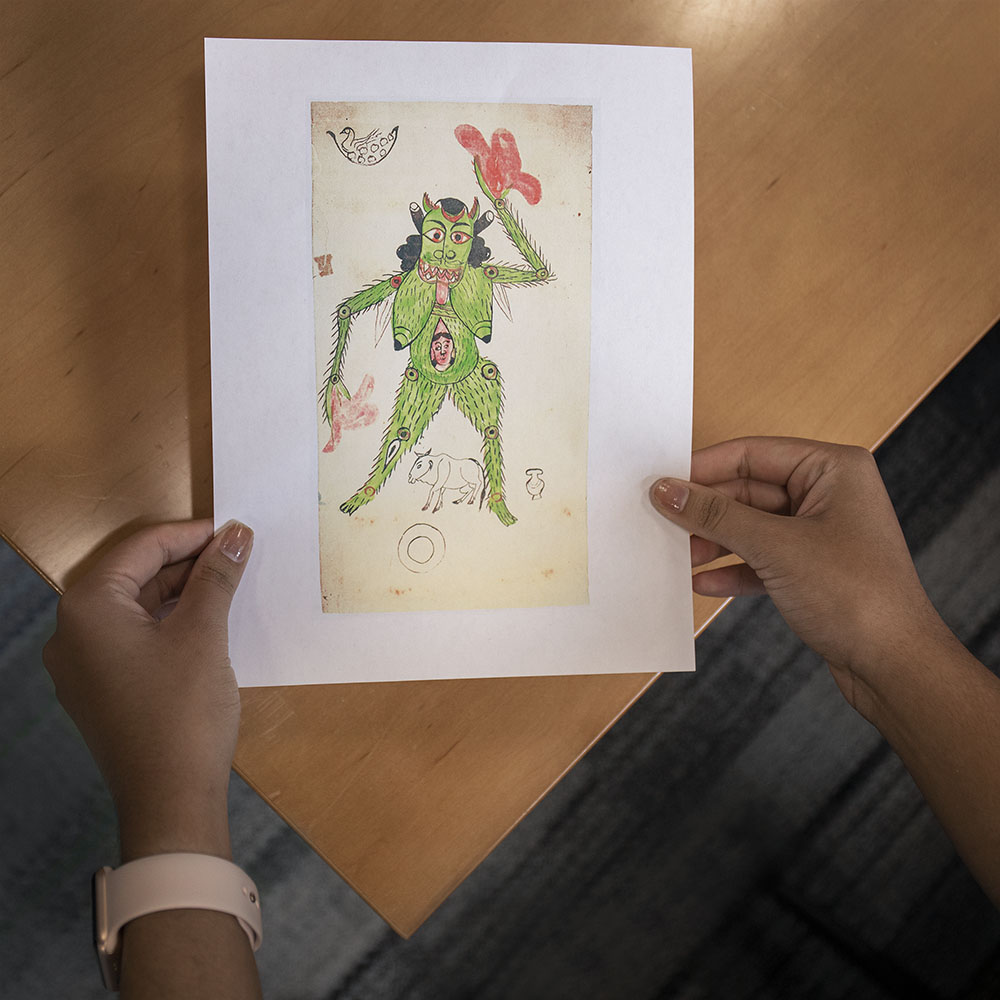
Each October, crowds of ghosts, goblins and gremlins will flock to your doorbell to celebrate the ghoulish joys of Halloween. However, the idea of monsters is not unique to the holiday.
The lore behind these spooky monsters has been told for centuries, with basis in literature and scientific fact, and this Halloween, the University of Florida has a class that will leave you with goosebumps.
The UnCommon Read course -- called What Makes A Monster -- is open to students in the undergraduate Honors Program for Fall 2018.
Inspired by the 200th anniversary of the classic work of literature, “Frankenstein” by Mary Shelley, the course touches on the idea that monsters are not just fascinating creatures, but that the concept of a monster taps an important part of the human psyche. Identifying our current cultural monsters has a lot to do with how we confront our fears and what we’re afraid of, according to Nina Stoyan-Rosenzweig, senior associate in the UF Health Science Library, who designed this innovative class to provide students a unique opportunity to collaborate with the Harn Museum of Art.
In fact, “the study of monsters is becoming increasingly important, used to gain insight into a culture and its upheavals. Studying monsters in America and how American society is obsessed with identifying monsters, or using the term ‘monsters’ almost as a form of stigma, to stigmatize someone in times of crisis or anxiety,” added Stoyan-Rosenzweig. “We kind of look for blame and identify those people we blame as monsters.”
The class opens up the door to a whirlwind of ethics, humanities, psychology and science with a twist: it is led by undergraduate student instructors.
A typical class would involve discussion, imagery, literature and sometimes film. That’s what students are learning each week when class meets, while also learning about the nature of monsters through great immersion and discussion. The course has become part of an effort on the part of the Health Science Center Library to engage a larger audience in a discussion on monsters.
Four undergraduate students from the Honors Program-- Yasmina Bassi, Mary Johnson, Arvind Sommi and Olivia Trumble-- have come together to team-teach the UnCommon Read class. The idea, inspired by a similar class at the University of Michigan, aims to support the continuous professional and academic development of the student instructors by providing them a unique opportunity to co-lead a university-level course.
“An important component of Honors Education in Higher Ed is exposing students to greater breadth. Classes like these challenge a student to get out of their discipline and to think critically about subject matter outside of their expertise,” said Mark Law, director of the UF Honors Program. “Plus, they can be fun and a great break from weightier classes.”
The coursework is decidedly unconventional, allowing undergraduate students lead the course and its curriculum while connecting students enrolled in the class with the Harn Museum to curate a museum exhibit, which opens in January.
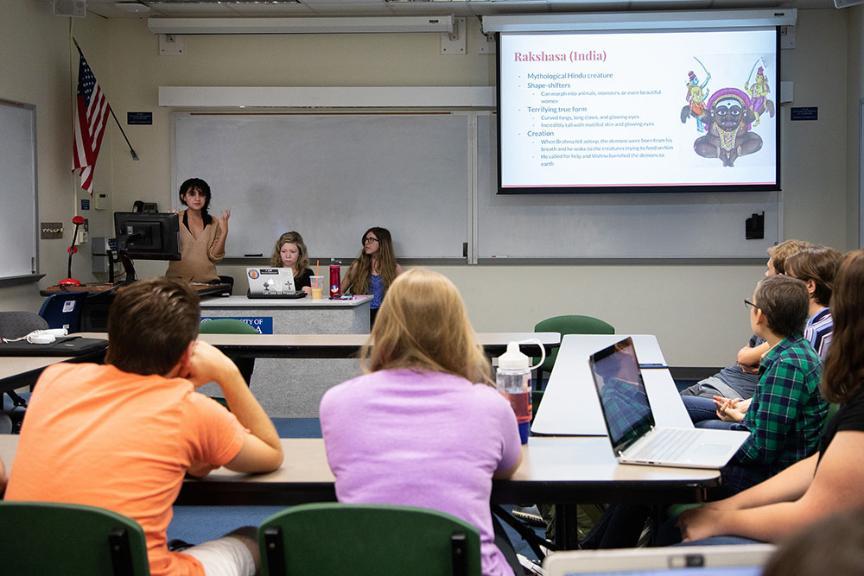
Yasmina Bassi leads class discussion while Mary Johnson, center, and Olivia Trumble, right, assist.
“I think it’s really exciting to be teaching a course as an undergrad and to bolster a conversation. It’s a great feeling when students participate,” said Trumble, junior pre-professional biology and anthropology student.
The students taking the class are benefiting from the students who are leading it because the instructors are teaching subjects they are passionate about. Johnson, who’s studying history and English with minors in French, classics, and education, and will be graduating with a teaching certificate in Spring, was able to kick-start her career in education because of this instruction opportunity.
“I like it because we’re getting to learn about other student instructors and what they’re doing. It’s much more of a relaxed setting, so we get more on-on-one time, stronger personal connections, than with the traditional professor,” said Brady Alexander, freshman pre-med student. “It’s more relatable.”
What makes a monster?
Over the years, our idea of what defines a monster has evolved. The course pushes students to think about how the creation of monsters over centuries can be indicative of both moral and empirical challenges societies face.
Students have been reading “Monstrous Progeny: A History of the Frankenstein Narratives” by Lester Friedman, emeritus professor of media and society at Hobart William Smith Colleges, to better their academic understanding of monsters. With funding from the Creative Campus effort and the Center for Humanities and the Public Sphere, he will visit the class when it meets on Halloween.
“The old-school definition would be the objective one, where a monster is based off of someone’s looks, but in today’s society, we take the subjective approach, and it is based off of someone’s actions. I would … say that a monster is [based] off of someone’s actions and if they’ve wronged society in general,” Alexander said.
At the beginning of the semester, museum curators selected some of the most "horrifying" art pieces, including photography, posters, sculptures, paintings and drawings, in its collection for students to choose from. For each, students were assigned a piece of art to research throughout the semester, write label text that will be used at the exhibit, and help promote the display.

Rachel Hernandez, left, and Brady Alexander, right, review the artworks they picked that will be on display in the Harn Museum of Art in January. Photo courtesy of the Harn Museum of Art.
Some of the pieces evoke horror and fear, instead of portraying a true monster in a classical sense. Many people think monsters are the things that haunt you in your nightmares, but what truly makes something monstrous? Monsters are prevalent and have been residing among us, and maybe even inside some of us.
When you think about some of the most infamous villains in literature, it’s likely that you’ll mention, or at least think about, Dracula.
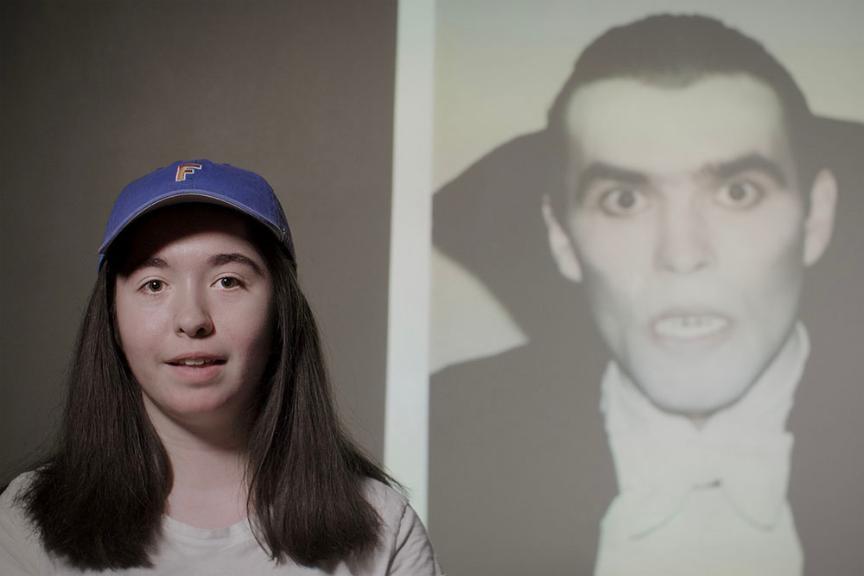
Juliana Boisse beside her monster choice of “Dracula” by Andy Warhol, 1981.
“Dracula is probably the most iconic monster in American culture and one of the things Andy Warhol was trying to get across is this idea of significant figures that have defined our culture. By using dracula as the icon for the series, Warhol was trying to pinpoint why we’re fascinated by monsters,” and what they represent symbolically, said Juliana Boisse, freshman, undecided major.
While some of the art is monstrous in the classical sense, other pieces modernize the idea of what a monster could be.
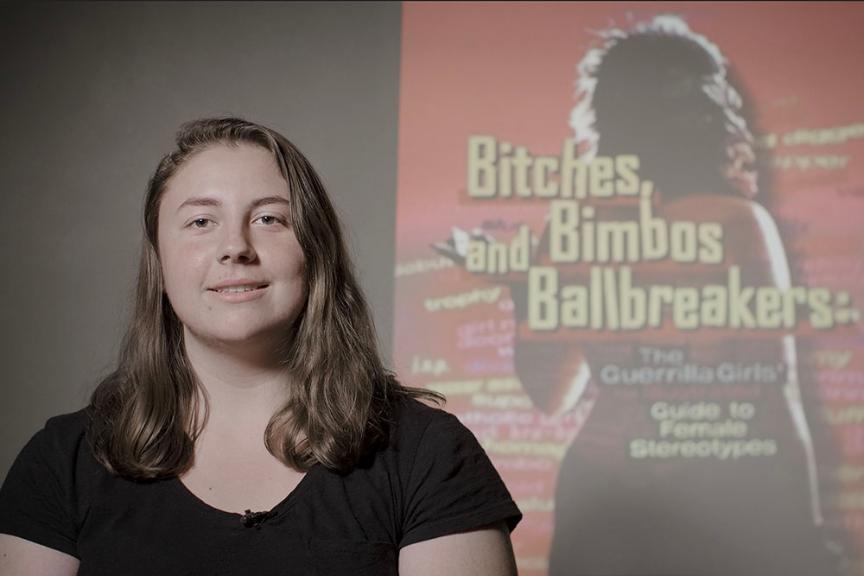
Brandi Caughorn, alongside the Guerrilla Girls’ cover image, the monstrous art book she is examining this semester.
“Being a monster is a distinctly human concept because it is a physical representation of moral or social deviation from the norm. This is the Guerrilla Girls comic book based on the representation of female stereotypes in society,” generated largely by men, said Brandi Caughorn, freshman, undecided major. “We have this image of a gorilla-like figure, but with a female body, and the female body is the most striking image in this piece because it's about the physical form of a woman and the power that it harnesses.”
The Guerilla Girls, hardcore feminists devoted to fighting sexism and racism, make commentary throughout the art book on how men perceive women, the fear, desire and control women can exude or evoke, and how men try to marginalize, stereotype or control women in return.
One student, Rachel Hernandez, freshman psychology major, picked the piece “Amona, Israel,” because she found it to be visceral and interesting.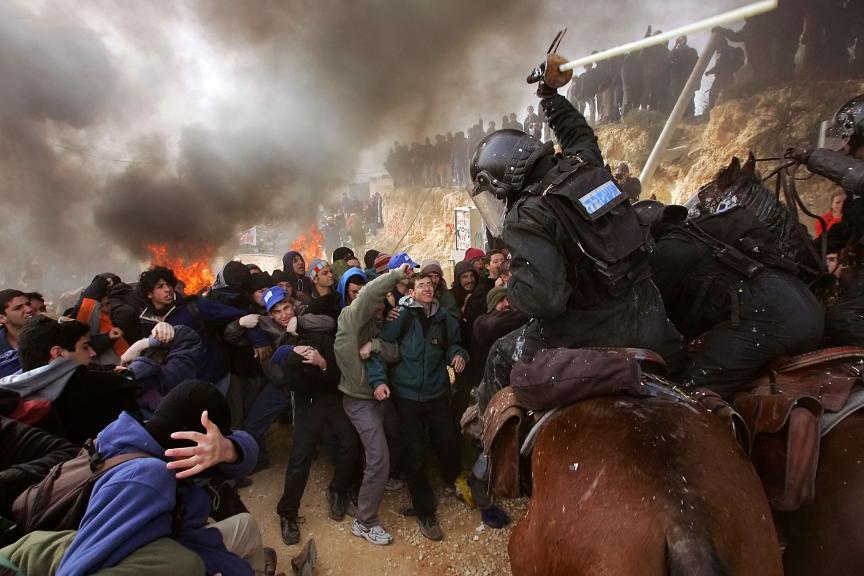
This artwork was selected by Rachel Hernandez. It is Natan Dvir, Amona, Israel, from the series, Belief, 2006, Digital print, Harn Museum of Art
Facilitating in the execution of the exhibit, Carol McCusker, curator of photography at the Harn Museum of Art, has hopes that students come away with a new appreciation of what a work of art can represent, and how the students’ perceive it and themselves in the art of looking.
“We need art in our lives. It makes our lives richer by giving form to what is often left unspoken: beauty, sadness, memory, a new perspective, life from another culture, joy, energy, conflict and resolution,” McCusker said. “[Art] provides time for the viewer to slow down, stop the media buzz, reflect, listen to their own inner compass, and make a personal connection to the art.”
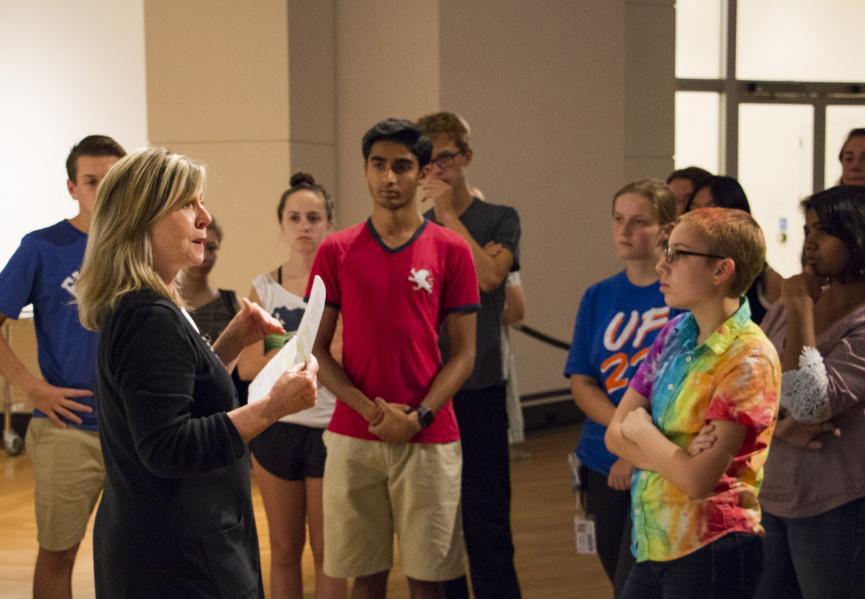
Carol McCusker, curator of photography at the Harn Museum of Art, shows the class the space where their exhibit will live. Photo courtesy of the Harn Museum of Art.
The students’ interpretive texts will go on display in an exhibition called Monsters and the Monstrous. The exhibit will run January 22 - June 2, 2019.
For more information, visit http://guides.uflib.ufl.edu/monster.